Question 1:
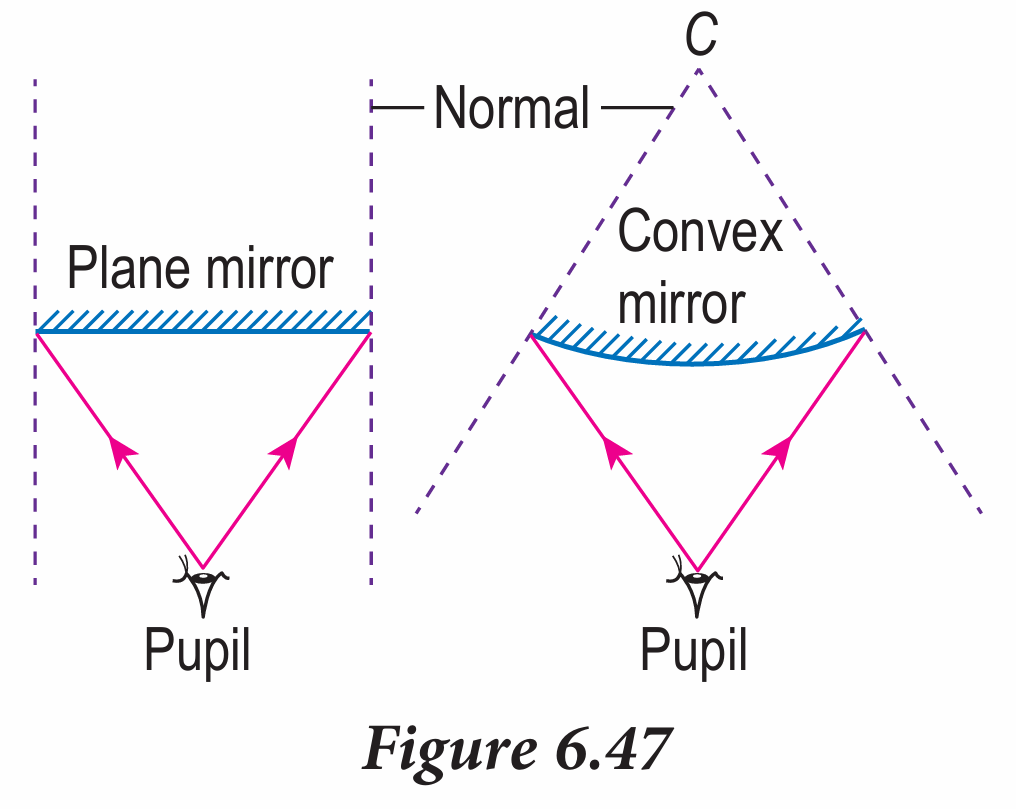
Figure 6.47 shows a pupil looking in the direction of a plane mirror and a convex mirror of the same size.
(a) Complete the path of light for both types of mirrors.
(b) Which type of mirror can produce a wider field of vision?
Answer:
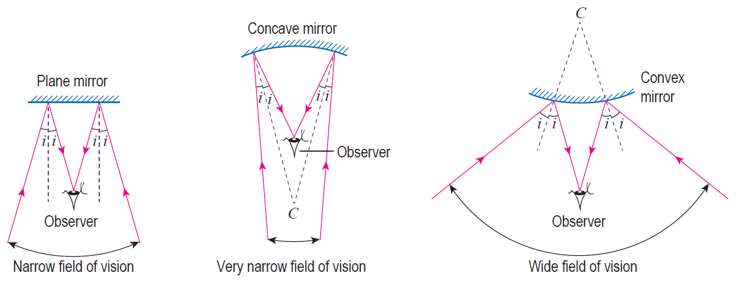
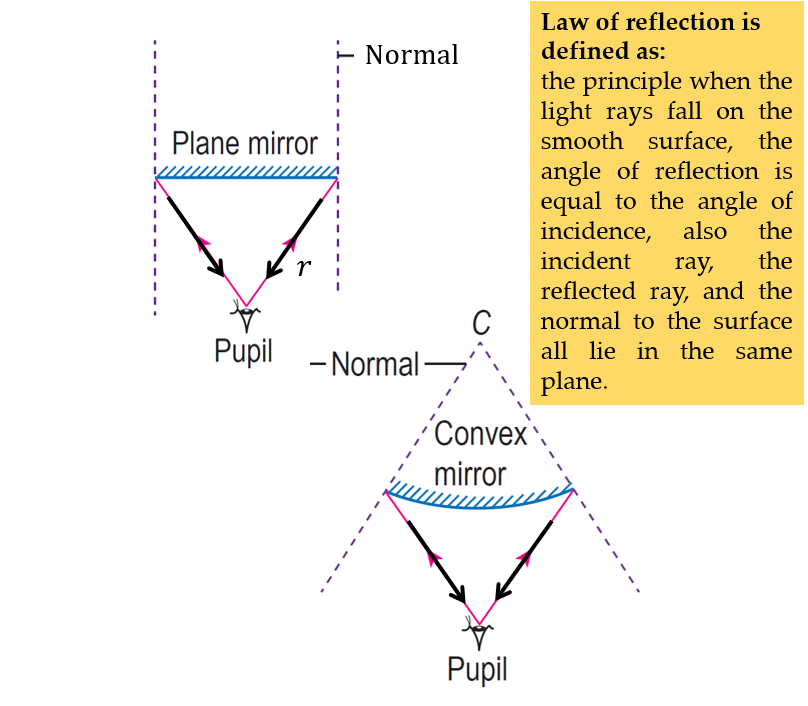
(a) Mistake on question, path of light is actually moving towards the eyes of the observer.
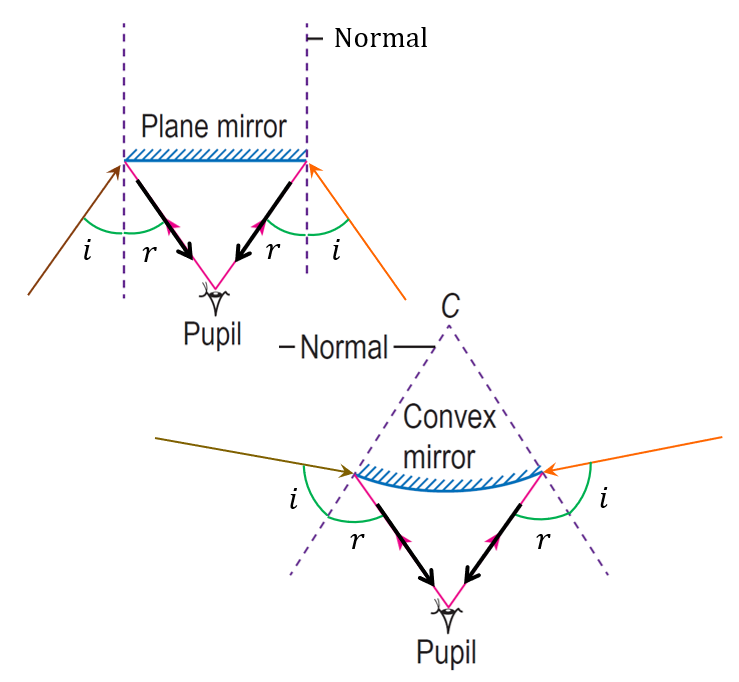
(b) Convex mirror can produce a wider field of vision.

Figure 6.47 shows a pupil looking in the direction of a plane mirror and a convex mirror of the same size.
(a) Complete the path of light for both types of mirrors.
(b) Which type of mirror can produce a wider field of vision?
Answer:


(a) Mistake on question, path of light is actually moving towards the eyes of the observer.

(b) Convex mirror can produce a wider field of vision.
Question 2:
Adelia holds a shiny steel spoon with its back (convex surface) facing her eyes at a distance of approximately 30 cm . She sees an upright image of herself. However, when the spoon is changed so that the front (concave surface) of the spoon is facing her eyes, an inverted image is observed.
(a) Explain this situation.
(b) Why is an upright image not seen on the front surface of the spoon at that distance?
Answer:
(a)
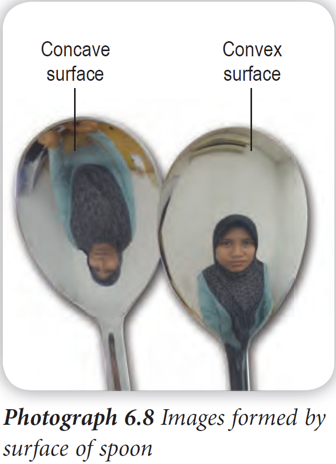
The shiny surface of the steel spoon acts as a mirror that can reflect light ray.
The back of the steel spoon which is convex surface acts as a convex mirror to form an image which is upright.
When the steel spoon is changed to concave surface which acts as a concave mirror, an inverted image is formed.
Inverted image formed is due to the object distance is greater than the focal length of the concave surface which acts as a concave mirror. (u > f).
(b) Upright image is not seen on the front surface of the spoon because the distance of the object (Adelia) is greater than the focal point, F of the concave surface of the spoon, that is u > f.
Adelia holds a shiny steel spoon with its back (convex surface) facing her eyes at a distance of approximately 30 cm . She sees an upright image of herself. However, when the spoon is changed so that the front (concave surface) of the spoon is facing her eyes, an inverted image is observed.
(a) Explain this situation.
(b) Why is an upright image not seen on the front surface of the spoon at that distance?
Answer:
(a)

The shiny surface of the steel spoon acts as a mirror that can reflect light ray.
The back of the steel spoon which is convex surface acts as a convex mirror to form an image which is upright.
When the steel spoon is changed to concave surface which acts as a concave mirror, an inverted image is formed.
Inverted image formed is due to the object distance is greater than the focal length of the concave surface which acts as a concave mirror. (u > f).
(b) Upright image is not seen on the front surface of the spoon because the distance of the object (Adelia) is greater than the focal point, F of the concave surface of the spoon, that is u > f.
